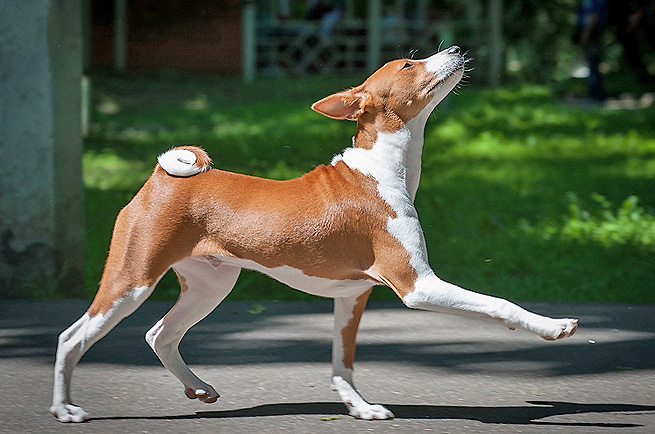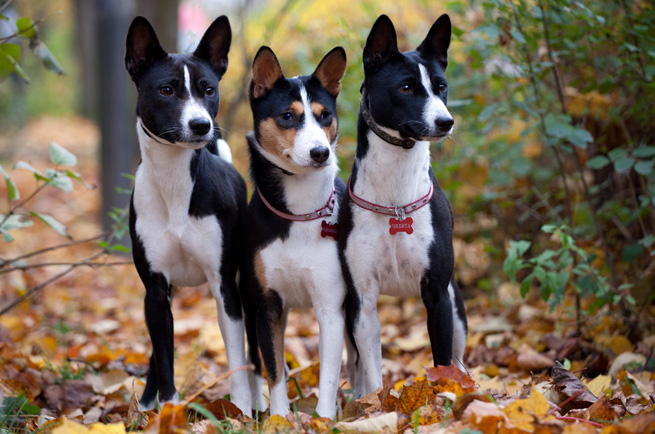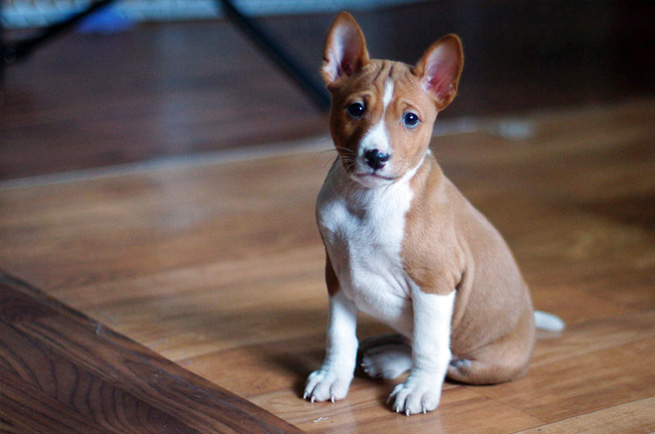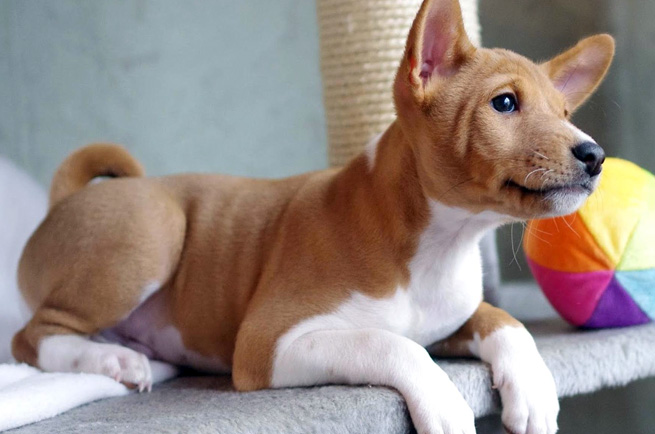Basenji
The Basenji is a medium-sized dog with a delicate frame and a spunky personality. These dogs are unique in that they don't bark! They do make a range of noises, including a yodel when they are excited.
Other Names
Lagos Bush Dogs, Congo Terriers
Country of Origin
Egypt
Colour
With white markings on their chest, feets, forehead and tail, their base colour includes chestnut red, black and tri-colours. In their native country they are also seen with brindle and blue merle colours.
Size
Medium
Height / Weight
The Basenji's height range is 40 - 43cms and weight between 9 - 11kgs.
Health
The Basenji is known to be particularly susceptible to Fanconi syndrome, as well as eye ailments and intestinal disorders.
Life Span
10-13 years
Intelligence
It is recommended that these dogs are socialised early as their spirited personalities can make them a challenge to train. Although this breed is not a show dog and not known for its obedience, if it is introduced early into the family it can make a wonderful pet.
Exercise
Medium
Suitability (Children)
Low
Feeding
In most cases, the Basenji can eat a normal dog food diet. They can be sneaky and steal any leftovers so extra caution must be taken or they are likely to pile on a few too many kilos!
Feeding Cost
$10 to $15
Other Cost
Excercise
The Basenji has high energy levels, high stamina and are very curious. To keep this dog’s mind and body healthy it would be a great idea to enrol your Basenji in a dog sport. They have limited road sense so extra caution must be taken if they are exercised near traffic.
Hair Shed
Little
Ailments
The Basenji is known to be particularly susceptible to Fanconi syndrome, as well as eye ailments and intestinal disorders.
Grooming
The Basenji is a low maintenance dog, and like a cat, does most of its grooming itself. In shedding season their coat can be wiped down with a glove to remove loose hairs, ears and nails can be checked periodically.
Grooming Frequency
Up to once a week
Trimming
Moderate
Basenjis originate from Egypt where they were bred to be companion dogs for the Pharoahs. Portraits of Basenjis can be found in the Egyptian pyramids. Over time Basenjis began to be bred for hunting purposes, they were trained to hunt in rough terrain in Central Africa. They were introduced to the Western World in England in 1895, later recognised by the American Kennel Club in 1943. To this day Basenjis are still great hunters and companion dogs.
comments powered by Disqus







